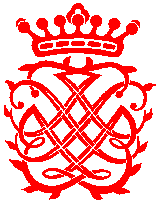




BACH 729
1. Prelude: Three-part Ricercare
2. Overture: Trio Sonata for flute, violin, cello & harpsichord
3. The Art of the Canon:
4. Five Canons on the Royal Theme
5. Five Canons on variations of the Royal Theme
6. Six-part Ricerare – Chamber Orchestra
7. Canonic Variations on Vom Himmel hoch BWV 769 |
Canonic Variations on the Christmas Hymn
Vom Himmel hoch BWV 769
Christoph Albrecht
As a complement to the Musical Offering, we could hardly find better than the set of five Canonic Variations on the Christmas hymn Vom Himmel hoch, BWV 769, composed as they were at around the same time as the Musical Offering, and exploring once again the Art of the Canon. The chorale, arranged by Bach as part of the Magnificat, is first given by the Choir, followed by the five canon-groups performed on the historic organ in Freiberg Cathedral built in 1714 by Bach's longtime friend Gottfried Silbermann. 7. Canonic Variations on Vom Himmel hoch BWV 769
The chorale performed by
Variation I: Canon at the Octave, Cantus Firmus in the pedal
Total CD playing time 70 minutes
|
We open our disc with a performance of the Three-part Ricercare which could not, at least in its instrumentation, be more authentic! This piece is performed on a 1746 Gottfried Silbermann fortepiano, one of those delivered to the King on which Bach was required to improvise, and thus one which may well have been played by Bach himself. It was recorded in the King's nearby Summer Palace of Sans Souci, its home since 1947.
We then embark on the program proper. We start with the Trio Sonata, as a "warm-up" piece or Overture, in which the Royal Theme gradually makes cautious appearances. The main canonic material consists of two groups of five canons, the first, canons on the Royal Theme, the second canons on derivatives or variations of the Royal Theme. At the beginning and the end of the two groups of canons come the two Ricercari, first the Three-part, lastly the Six-part.
Bach sent the work, engraved at his own expense, to the King in three instalments, with no performance or instrumentation instructions, no program order, and the canons were simply one-liners which the players would need to interpret. So it is up to the producer and performers to settle on a program order, and instrumentation.
We have chosen to present this work as performed by chamber orchestra, sometimes in full, or in many of the canons, as solos. This rendition satisfies our own requirements of clarity and "enjoyability"; however there is also considerable historical justification for our choice. The King had at his command what was in effect a substantial chamber orchestra consisting of twenty-plus musicians who were among the very best to be found anywhere and included many eminent names well known to Bach. They would thus have been more than capable of arranging their own programming and instrumentation. The lighter canons might well have been performed by single instruments, while those of more substance, including the two Ricercari, could well have drawn in the entire Capelle. No doubt His Majesty himself enjoyed taking a leading part – we may confidently listen to the flute parts and imagine the king performing them.
Many recordings play the canons in mixed order with long spaces between these often short pieces. We have grouped them into two groups, first canons on the Royal Theme, then canons on variations of the Royal Theme. We present them almost like Suites of movements, with the canons following fairly closely on one another. We feel that this allows the listener to follow the developing complexity of the structure - and it makes for more enjoyable listening too.
Footnote.
In 1740 Frederick "the Great" succeeded to the Prussian throne, and a few months later initiated the invasion and conquest of Silesia, the strategically important corridor between Poland and Saxony. This was to be the first act in the long series of internal wars through which Frederick sought to expand his territorial ambitions and in which Leipzig was besieged and threatened with destruction.
The successful taking of Leipzig was facilitated by the practical burgers of the City, who gallantly surrendered rather than have their fine city destroyed. The conquerors however made their point by occupying the Leipzig Garrison over Christmas 1745, withdrawing at the start of the New Year. On the instructions of the Leipzig City Council, Bach composed a celebratory/thanksgiving cantata, BWV 192 Nun Danket Alle Gott, which was performed on January 9th, 1746. Leipzig and Saxony were however required to pay onerous fines/reparations, impoverishing both city and state.
At this time, Bach was also invited ("commanded"!) to visit Frederick at Potsdam. An amateur musician himself, Frederick was obviously keen to meet the famous Sebastian Bach. But this clearly presented Bach with a political dilemma. How could he visit Potsdam so soon after the humiliation of his own fair city? Bach appears to have postponed the visit on the grounds of advancing years and declining health, and it was not until 1747 that he considered it acceptable to his fellow burghers to make the journey.
Our illustration depicts a typical evening concert in the Royal Palace of Sans-Souci in Potsdam, the King as flautist leading his chamber orchestra.
|